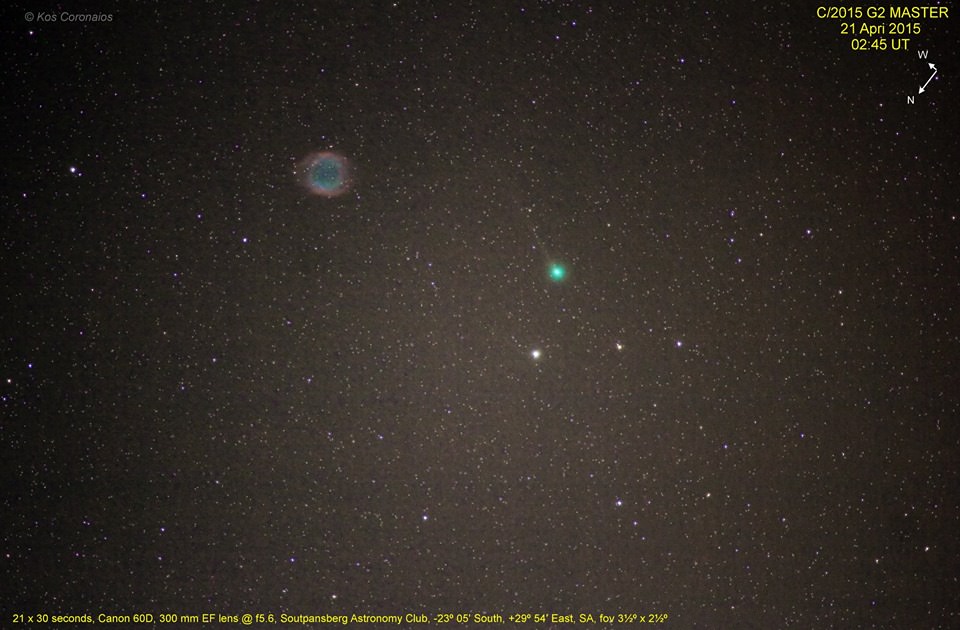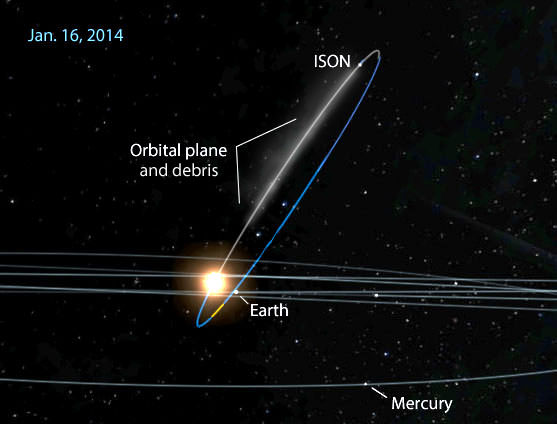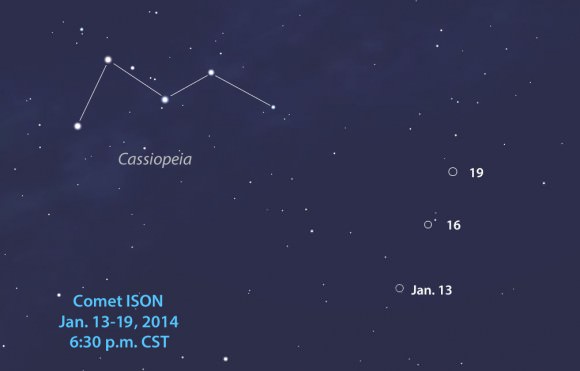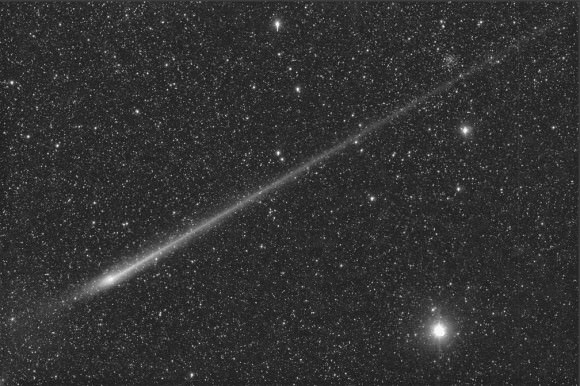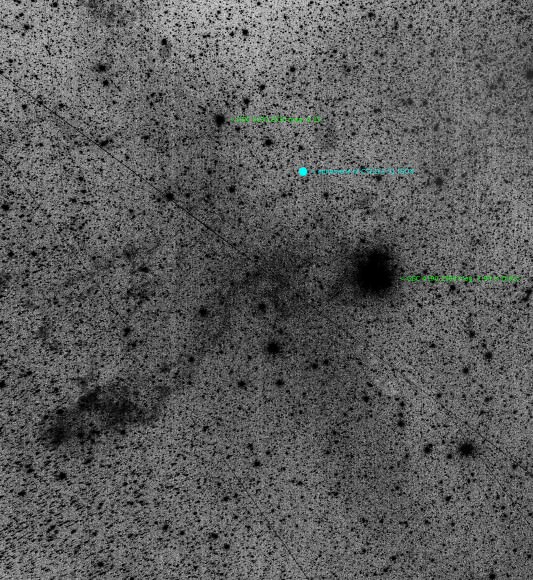Did you catch the performance of Comet C/2014 Q2 Lovejoy earlier this year? Every year provides a few sure bets and surprises when it comes to binocular comets, and while we may still be long overdue for the next truly ‘Great Comet,’ 2015 has been no exception.
This week, we’d like to turn your attention to two icy visitors to the inner solar system which may present the best bets comet-wise over the next few weeks: Comets C/2014 Q1 PanSTARRS and C/2015 G2 MASTER.
First up is Comet C/2014 Q1 PanSTARRS. Discovered on August 16, 2014 by the Panoramic Survey Telescope & Rapid Response System (PanSTARRS) based atop Mount Haleakala in Hawaii, we’ve known of the potential for Q1 PanSTARRS to put on a decent show this summer for a while. In fact, it made our roundup of comets to watch for in our 101 Astronomical Events for 2015. Q1 PanSTARRS currently sits at +11th magnitude as a morning sky object in the constellation Pisces. On a 39,000 year long parabolic orbit inclined 45 degrees relative to the Earth’s orbit, Q1 PanSTARRS will leap up across the ecliptic on May 17th and perhaps reach +3rd magnitude as it nears perihelion in early July and transitions to the evening sky.
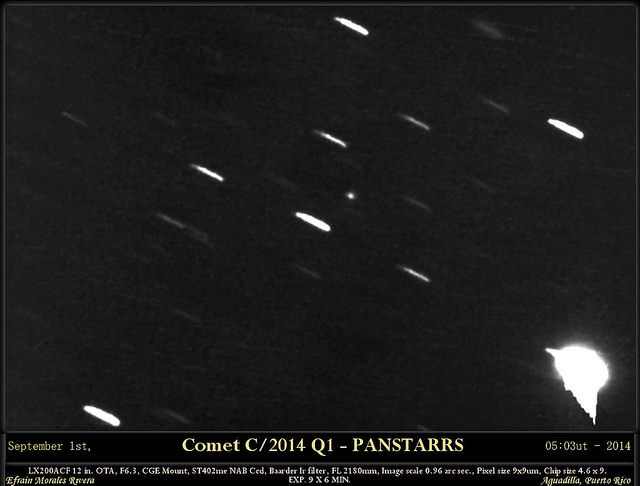
Though it may put on its best show in July and August, a few caveats are in order. First, we’ll be looking at Q1 PanSTARRS beyond the summer Sun, and like C/2011 L4 PanSTARRS a few years back, it’ll never leave the dusk twilight, and will always appear against a low contrast backdrop.
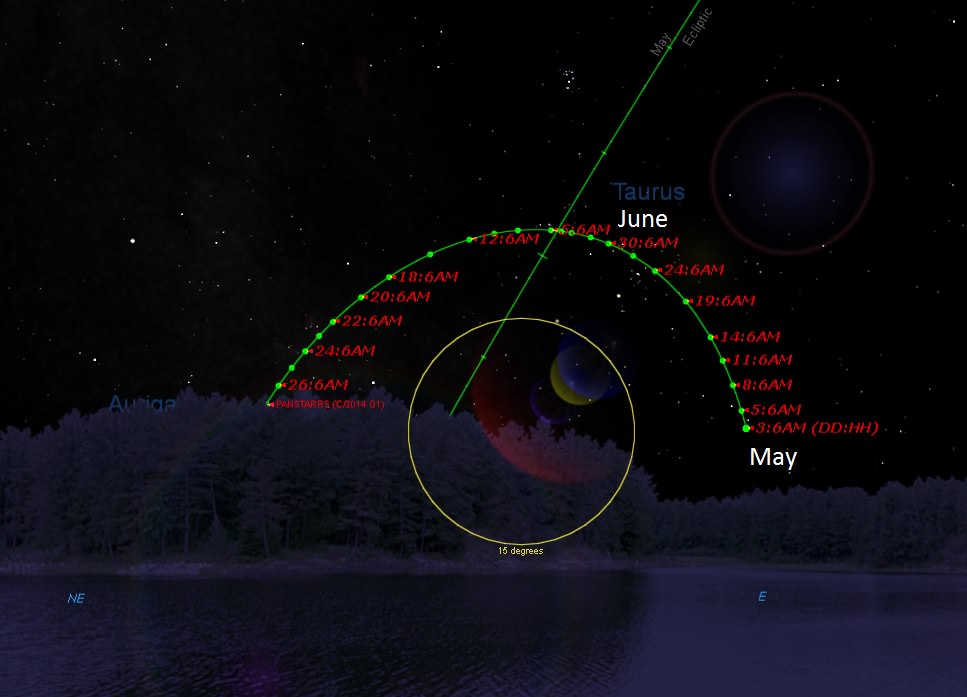
Here are some notable upcoming events for Comet C/2014 Q1 PanSTARRS:
(Unless otherwise noted, a ‘close pass’ is here considered to be less than one degree of arc, about twice the diameter of a Full Moon.)
May 16: Passes into the constellation Aries.
May 16: The waning crescent Moon passes 2 degrees distant.
May 17: Crosses northward through the ecliptic.
May 20: May break +10th magnitude.
June 11: Passes in to the constellation Taurus.
June 12: Passes 2 degrees from M45 (The Pleiades).
June 15: May break 6th magnitude.
June 20: Passes into Perseus.
June 21: Passes into Auriga.
June 23: Passes +2.7 magnitude star Hassaleh (Iota Aurigae).
June 25: Passes the +7.5 magnitude open cluster IC 410.
June 26: Passes +6 magnitude Pinwheel Open Cluster (M36).
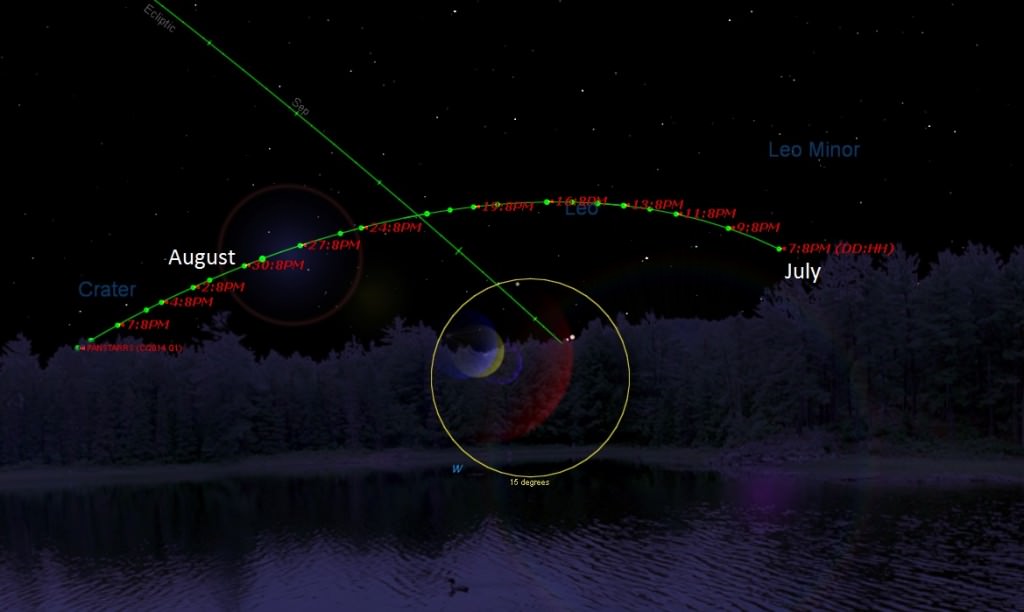
July 2: Crosses into Gemini.
July 3: Passes the +3.6 magnitude star Theta Geminorum.
July 5: Passes 10 degrees north of the Sun and into the evening sky.
July 6: Passes midway between Castor and Pollux.
July 6: Reaches perihelion at 0.315 astronomical units (AU) from the Sun.
July 7: May top out at +3rd magnitude.
July 8: Crosses into Cancer.
July 12: Photo Op: passes M44, the Beehive Cluster.
July 13: Sits 30 degrees from Comet C/2015 G2 MASTER (see below).
July 15: May drop below +6th magnitude.
July 15: Crosses the ecliptic southward.
July 17: The waxing crescent Moon passes 1.5 degrees south.
July 19: Crosses into Leo.
July 20: Closest to Earth, at 1.18 AU distant.
July 21: Less than 10 degrees from Jupiter and Venus.
July 22: Crosses into Sextans.
July 26: Crosses the celestial equator southward.
August 4: Crosses into Hydra.
August 5: Crosses into Crater.
August 18: Crosses back into Hydra.
August 30: Crosses into Centaurus.
September 1: Drops below +10th magnitude.
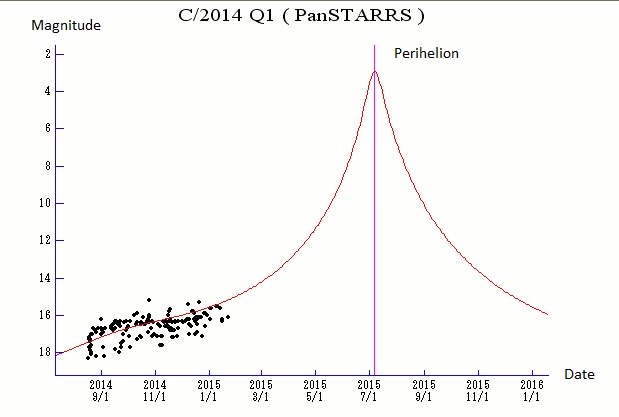
The next comet on deck is the recently discovered C/2015 G2 MASTER. If you live in the southern hemisphere, G2 MASTER is the comet that perhaps you haven’t heard of, but should be watching in the dawn sky. Discovered last month on April 7 as by MASTER-SAAO (The Russian built Mobile Astronomical System of Telescope-Robots at the South African Astronomical Observatory), this is not only the first comet bagged by MASTER, but the first comet discovery from South Africa since 1978. G2 MASTER has already reached magnitude +7 and is currently crossing the constellation Sculptor. It is also currently only visible in the dawn sky south of 15 degrees north latitude, but images already show a short spiky tail jutting out from G2 MASTER, and the comet may rival Q2 Lovejoy’s performance from earlier this year. Expect G2 MASTER to top out at magnitude +6 as it nears perihelion in mid-May. Observers around 30 degrees north latitude in the southern U.S. should get their first good looks at G2 MASTER in late May, as it vaults up past Sirius and breaks 10 degrees elevation in the evening sky after sunset. Again, as with Q1 PanSTARRS, cometary performance versus twilight will be key!
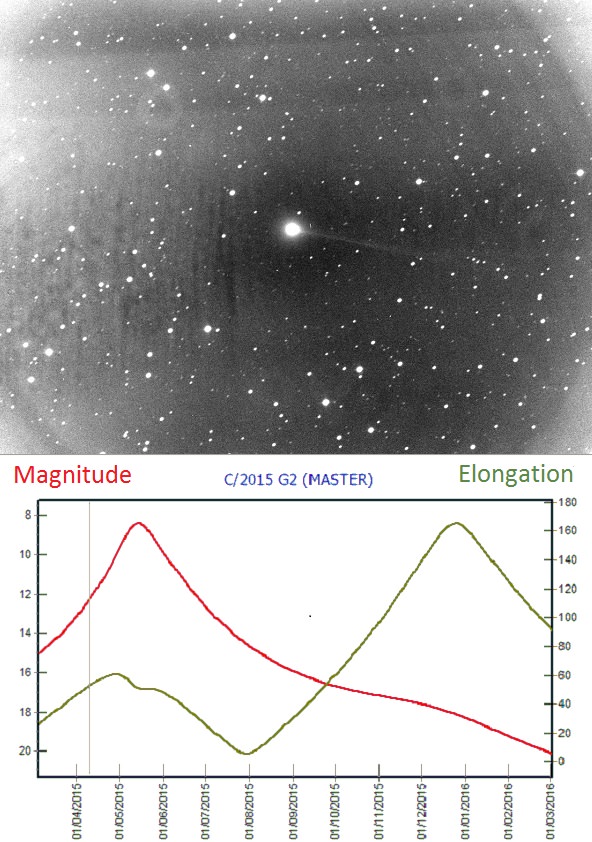
Here are some key dates with astronomical destiny for Comet G2 MASTER over the coming weeks:
May 9: Crosses into Fornax.
May 15: May top out at +6th magnitude.
May 13: Closest to Earth at 0.47 AU.
May 14: Crosses into Eridanus.
May 16: Crosses into Caelum.
May 17: Crosses into Lepus.
May 20: Passes the +3.8 magnitude star Delta Leporis.
May 23: Crosses into Canis Major.
May 23: Reaches perihelion at 0.8 AU from the Sun.
May 27: Crosses into Monoceros.
May 28: Passes the +5.9 magnitude Open Cluster M50.
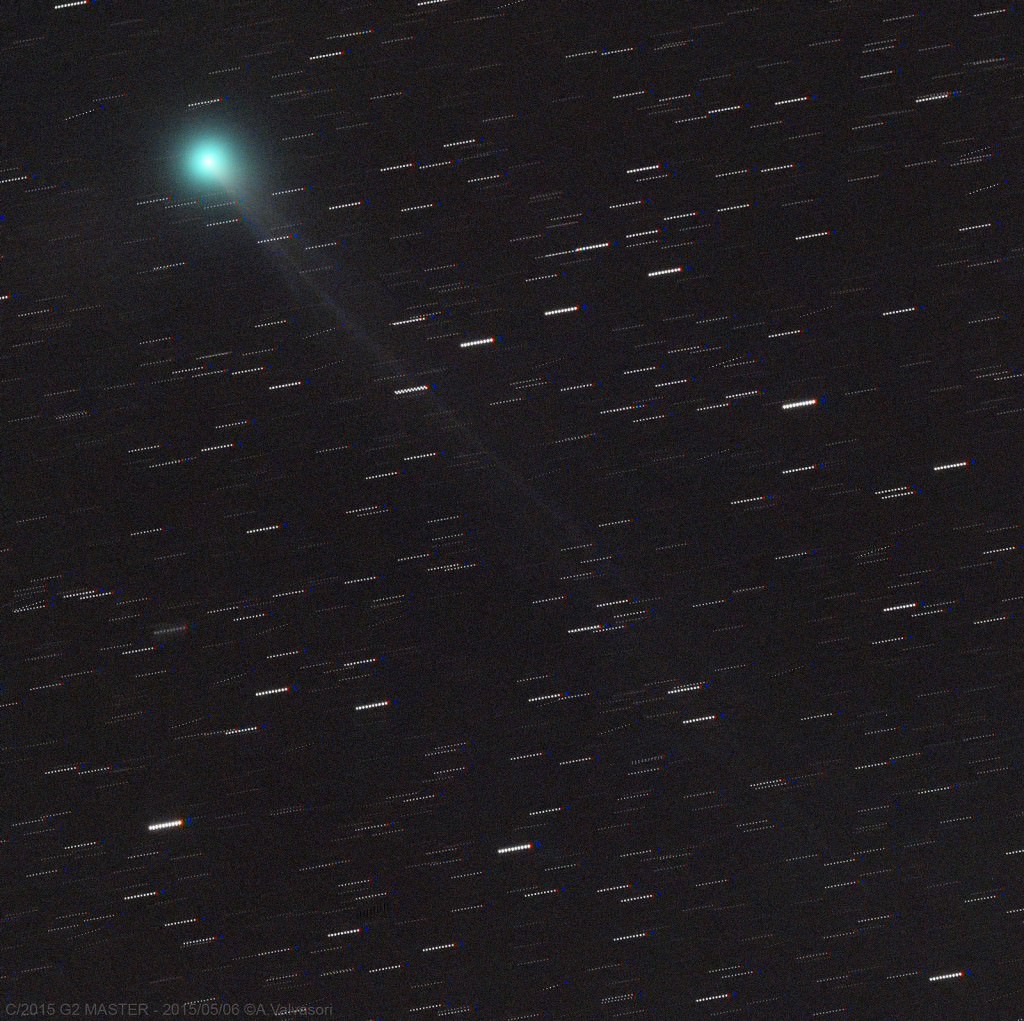
June 8: Crosses northward over the celestial equator and into the constellation Canis Minor.
July 1: May drop below 10th magnitude.
G2 MASTER also crosses SOHO’s field of view on July 24th through August 4th, though it may be too faint to see at this point.
Here are the Moon phases for the coming weeks to aid you in your comet quest:
Full Moons: June 2nd, July 2nd, July 31st, August 29th.
New Moons: May 18th, June 16th, July 16th, August 14th.
Binoculars are our favorite ‘weapon of choice’ for comet hunting. Online, Heavens-Above is a great resource for quickly and simply generating a given comet’s sky position in right ascension and declination; we always check out the Comet Observers Database and Seiichi Yoshida’s Weekly Information about Bright Comets to see what these denizens of the outer solar system are currently up to.
Good luck, and be sure to regale us with your comet-hunting tales of tragedy and triumph!

